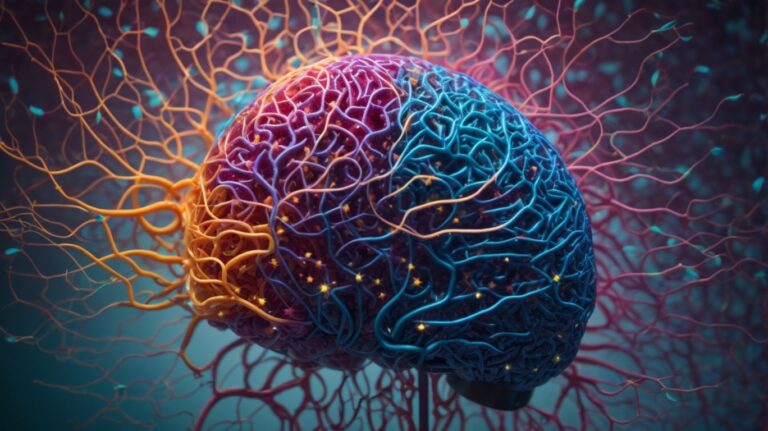Have you ever found yourself in a situation where your beliefs or attitudes clash with your behavior? This internal conflict is known as cognitive dissonance, and it can have a significant impact on our behavior and decision-making.
In this article, we will explore what cognitive dissonance is, how it affects behavior, and the strategies for reducing it. From changing behavior and seeking support to using humor to disarm the dissonance, we will delve into practical methods for managing cognitive dissonance.
We will discuss how to prevent cognitive dissonance through open-mindedness, critical thinking, and self-evaluation. If you’re interested in understanding the psychological phenomenon of cognitive dissonance and learning how to mitigate its effects, this article is for you.
Contents
- 1 Key Takeaways:
- 2 What Is Cognitive Dissonance?
- 3 How Does Cognitive Dissonance Affect Behavior?
- 4 What Are the Strategies for Reducing Cognitive Dissonance?
- 4.1 Change Behavior
- 4.2 Change Attitude or Belief
- 4.3 Seek Information or Support
- 4.4 Focus on Positive Aspects
- 4.5 Find Justification or Rationalization
- 4.6 Avoid or Deny the Dissonance
- 4.7 Re-evaluate the Importance of the Dissonant Beliefs
- 4.8 Seek Confirmation from Others
- 4.9 Find a Compromise or Balance
- 4.10 Use Humor to Disarm the Dissonance
- 5 How Can Cognitive Dissonance Be Prevented?
- 6 Frequently Asked Questions
- 6.1 What is cognitive dissonance?
- 6.2 How does cognitive dissonance affect our behavior?
- 6.3 What are some common strategies for reducing cognitive dissonance in psychology?
- 6.4 Can cognitive dissonance be beneficial?
- 6.5 How can cognitive dissonance be harmful?
- 6.6 Are there any long-term strategies for reducing cognitive dissonance?
Key Takeaways:
- Accepting and embracing change can reduce cognitive dissonance.
- Seeking diverse perspectives and practicing critical thinking can prevent cognitive dissonance.
- Continuously evaluating and adjusting beliefs and behaviors can help manage cognitive dissonance.
What Is Cognitive Dissonance?
Cognitive dissonance, a concept introduced by Leon Festinger, refers to the psychological discomfort that arises from holding contradictory beliefs, attitudes, or behaviors simultaneously.
This theory originated from Festinger’s study of a doomsday cult whose members faced the challenge of reconciling their belief in an impending apocalypse with their lack of evidence for it.
According to cognitive dissonance theory, individuals experience discomfort when their actions do not align with their beliefs, leading them to rationalize or modify their beliefs to reduce the discomfort.
For instance, a person who smokes despite knowing the health risks may experience cognitive dissonance.
The conflict between the behavior of smoking and the knowledge of its harmful effects creates psychological discomfort, prompting the individual to either quit smoking or downplay the risks to alleviate the dissonance.
How Does Cognitive Dissonance Affect Behavior?
The presence of cognitive dissonance can lead individuals to experience discomfort, prompting them to alter their beliefs, attitudes, or behaviors in an attempt to reduce the internal conflict.
Cognitive dissonance can significantly influence decision-making processes. When individuals encounter conflicting beliefs or ideas, they may feel a sense of discomfort, driving them to seek resolution.
This could lead to adjustments in their attitudes or behaviors, as they strive to align their actions with their beliefs in order to reduce the cognitive dissonance. The impact of cognitive dissonance on attitude change is noteworthy. It can lead individuals to gradually modify their perceptions and beliefs to alleviate the discomfort caused by conflicting information or experiences.
What Are the Strategies for Reducing Cognitive Dissonance?
To alleviate cognitive dissonance, individuals may employ various strategies, such as changing their behavior or modifying their beliefs to align with their actions or thoughts.
Behavior change involves altering one’s actions to reduce the discomfort caused by conflicting beliefs or attitudes.
This can manifest as simple adjustments in daily routines or significant lifestyle modifications.
Attitude modification, on the other hand, focuses on altering one’s perceptions and beliefs about a situation to align with their behavior.
By reassessing their attitudes, individuals can mitigate the internal tension caused by cognitive dissonance.
Change Behavior
One effective strategy for reducing cognitive dissonance is to change one’s behavior to align with their beliefs or attitudes, thereby minimizing the internal conflict.
For example, if someone strongly values environmental conservation but continues to engage in behaviors that harm the environment, such as excessive use of plastic, it can lead to cognitive dissonance.
To reduce this dissonance, they can change their behavior by using reusable products, reducing their carbon footprint, and supporting eco-friendly initiatives.
Practical steps for individuals to align their actions with their beliefs include self-reflection to identify areas of dissonance, setting specific goals for behavior change, seeking social support from like-minded individuals, and educating oneself about the importance and benefits of the desired behavior change.
Change Attitude or Belief
Modifying one’s attitudes or beliefs to be consistent with their behavior can serve as a potent method for reducing cognitive dissonance and restoring psychological balance.
This process, known as attitude or belief change, involves individuals altering their cognitive perceptions, beliefs, and values to align with their actions.
For example, someone who initially believed in the inefficacy of a healthy lifestyle but subsequently adopts regular exercise and nutritious eating habits may experience cognitive dissonance. To resolve this, they might reconsider their initial belief and gradually accept the benefits of a healthy lifestyle.
Seek Information or Support
Seeking additional information or support from others can help individuals reconcile conflicting beliefs, attitudes, or behaviors, easing the burden of cognitive dissonance.
External input plays a crucial role in cognitive dissonance reduction. When individuals encounter conflicting thoughts or actions, relying on external sources can provide clarity and guidance.
This can involve seeking guidance from mentors, engaging in discussions with peers, or consulting knowledgeable experts. These interactions offer different perspectives, new information, and potential solutions, aiding in the resolution of internal conflicts.
Focus on Positive Aspects
Directing attention towards the positive aspects of a situation or decision can aid in reducing cognitive dissonance, fostering a more harmonious mental state.
This approach involves acknowledging and amplifying the beneficial elements rather than dwelling on the negative or conflicting aspects. By doing so, individuals can mitigate the internal tension that arises from holding contradictory beliefs or making challenging choices.
Such a shift in focus can play a significant role in promoting mental well-being, as it encourages individuals to reframe their perspectives and cultivate a more optimistic outlook.
Find Justification or Rationalization
Seeking justification or rationalizing one’s conflicting beliefs or actions can serve as a coping mechanism for alleviating cognitive dissonance and restoring inner harmony.
When individuals experience conflicting beliefs or behaviors, they may feel discomfort and psychological tension.
Justification involves finding acceptable reasons and logical explanations for one’s choices or attitudes, helping to reduce the feelings of dissonance. For example, a person who smokes despite knowing the health risks may justify their behavior by emphasizing the psychological relief it provides.
On the other hand, rationalization encompasses the reinterpretation of one’s actions to align with their beliefs or values, reducing the internal conflict. An individual may rationalize excessive spending by convincing themselves that indulgence leads to happiness, thereby reducing dissonance.
Avoid or Deny the Dissonance
Some individuals may choose to avoid or deny the existence of cognitive dissonance, seeking to minimize its impact by disregarding the conflicting elements within their thoughts or actions.
When confronted with dissonant beliefs or behaviors, individuals may employ a variety of dissonance reduction strategies.
By downplaying the significance of the conflicting information or dismissing its relevance to their personal beliefs, they attempt to maintain a sense of internal consistency and reduce the discomfort associated with cognitive dissonance.
While these avoidance and denial tactics may provide temporary relief, they can also hinder personal growth and problem-solving. Avoidance of cognitive dissonance may prevent individuals from critically examining their beliefs and behaviors, limiting their opportunities for self-reflection and adaptation.
Denying the presence of cognitive dissonance can impede interpersonal communication and collaboration, as it may lead to misunderstandings and misconceptions.
Re-evaluate the Importance of the Dissonant Beliefs
Re-assessing the significance and impact of conflicting beliefs or attitudes can help individuals navigate cognitive dissonance, potentially leading to a re-evaluation and realignment of their cognitive framework.
When individuals are confronted with dissonant beliefs, they often experience a sense of discomfort and tension.
By critically examining these conflicting beliefs, individuals can strive to reduce this discomfort and achieve a more harmonious cognitive state.
For example, if someone holds the belief that regular exercise is important for health but struggles to find the time to fit it into their schedule, they may experience dissonance.
By re-evaluating the importance of exercise and their own time management, they can work towards resolving this internal conflict.
Seek Confirmation from Others
Seeking confirmation or validation from external sources can aid in resolving cognitive dissonance, providing individuals with reassurance and clarity regarding their conflicting beliefs or behaviors.
This strategy acknowledges the human tendency to seek reassurance and validation from others as a means to reduce the discomfort of conflicting thoughts or actions.
When individuals receive validation from trusted sources, they can experience a sense of relief, knowing that their beliefs or behaviors are not isolated or irrational. This external validation not only validates their choices but also promotes a sense of belonging and acceptance within their social circles.
The affirmation from others serves as a powerful tool in aligning their internal beliefs with external support, thus fostering a more cohesive and harmonious mindset.
Find a Compromise or Balance
Striving to find a compromise or achieve a balance between conflicting beliefs or attitudes can help individuals reduce cognitive dissonance and restore a sense of internal harmony.
When facing conflicting thoughts, individuals often experience cognitive dissonance, leading to discomfort and mental tension.
Finding a compromise allows for acknowledging and addressing conflicting viewpoints without fully rejecting one over the other.
For example, in a workplace scenario, managers may need to balance the pressure for high productivity with the need for maintaining a healthy work-life balance for employees.
By finding a middle ground, they can reduce tension and foster a more harmonious work environment.
Use Humor to Disarm the Dissonance
Employing humor as a means to disarm or alleviate cognitive dissonance can create a lighthearted perspective on conflicting beliefs or behaviors, fostering a more balanced mental state.
When individuals face internal conflicts arising from contradictory thoughts or actions, humor can serve as a potent tool to ease the discomfort associated with cognitive dissonance.
By injecting humor into the situation, it allows the mind to approach the conflicting elements from a more playful and accepting standpoint.
The psychological effects of humor in dissonance reduction can be profound. Through the release of endorphins and the activation of positive emotions, humor can redirect focus away from the discomfort of cognitive dissonance, offering a refreshing break from the internal tension.
Beyond the immediate relief, leveraging humor to address cognitive dissonance may lead to long-term benefits by creating a space for introspection, self-acceptance, and the willingness to explore alternative perspectives.
By infusing levity into a situation fraught with conflicting beliefs, individuals can experience a shift towards a more harmonious internal dialogue, ultimately contributing to enhanced well-being and personal growth.
How Can Cognitive Dissonance Be Prevented?
Preventing cognitive dissonance involves fostering an open-minded approach, seeking diverse perspectives, and practicing critical thinking to evaluate and adjust beliefs and behaviors proactively.
By embracing open-mindedness, individuals can broaden their understanding of different viewpoints, which can aid in resolving conflicting beliefs.
Continuous self-evaluation is essential to identify and address any inconsistencies between thoughts, feelings, and actions, thus promoting internal harmony and reducing cognitive dissonance.
Actively engaging in discussions with individuals holding contrasting opinions can provide valuable insights, challenging existing beliefs and fostering intellectual growth.
Be Open-minded and Willing to Change
Embracing cognitive flexibility and a willingness to change one’s perspectives are essential attributes for preventing cognitive dissonance and promoting mental adaptability.
When individuals remain open-minded and receptive to new ideas, they are better equipped to navigate complex situations and adapt to evolving circumstances.
By actively seeking diverse viewpoints and considering alternative solutions, people can break free from rigid thought patterns and avoid cognitive dissonance.
For instance, in the workplace, employees who demonstrate cognitive adaptability are more capable of embracing change, overcoming challenges, and contributing to innovative problem-solving.
Psychologists emphasize the importance of cognitive flexibility in improving mental well-being and reducing stress.
Seek Diverse Perspectives
Actively seeking diverse perspectives and alternative viewpoints can broaden one’s cognitive horizons, mitigating the potential for cognitive dissonance by fostering a comprehensive and inclusive outlook.
This proactive approach to gathering diverse perspectives enables individuals to enhance their cognitive adaptability, allowing for greater flexibility in understanding and evaluating beliefs and ideas.
Embracing these varied viewpoints also fosters a more cohesive and resilient cognitive framework, bolstering an individual’s ability to navigate complexities and contradictions with greater ease and understanding.
Practice Critical Thinking
Engaging in critical thinking and analytical reasoning can enable individuals to evaluate their beliefs and behaviors, potentially averting the onset of cognitive dissonance by fostering informed and rational decision-making.
Critical thinking enhances an individual’s ability to assess information from diverse perspectives, encouraging a more balanced and nuanced understanding of complex issues.
Through rational analysis and reflective reasoning, individuals can develop a heightened awareness of their own thought processes, facilitating the identification of inconsistencies and biases that may contribute to cognitive dissonance.
The incorporation of logic and evidence-based reasoning offers a solid foundation for assessing the validity and reliability of information, reducing the susceptibility to cognitive dissonance.
By cultivating a habit of critical reflection, individuals can actively engage in continuous self-examination, leading to greater cognitive adaptability and resilience in the face of conflicting beliefs or ideas.
Be Aware of Biases and Prejudices
Developing an awareness of personal biases and prejudices can contribute to the prevention of cognitive dissonance, enabling individuals to approach beliefs and decisions with a more objective and discerning mindset.
When individuals acknowledge their own biases, they are more likely to examine information from various perspectives, fostering adaptability in their cognitive processes.
For instance, stereotypes can subconsciously influence how someone perceives others, affecting the accuracy of judgment. By recognizing and addressing these biases, individuals can enhance their ability to make fair and well-informed decisions.
Continuously Evaluate and Adjust Beliefs and Behaviors
Regularly evaluating and adjusting one’s beliefs and behaviors through introspection and self-reflection can serve as a proactive measure for preventing cognitive dissonance and promoting mental resilience.
By embracing the practice of continuous self-evaluation, individuals can enhance their ability to adapt to new information and experiences, thereby fostering cognitive flexibility and reducing the likelihood of experiencing internal conflicts.
This proactive approach enables individuals to align their beliefs and actions, fostering a more congruent and harmonious internal state. Embracing introspection also cultivates a deeper self-awareness, helping individuals to recognize and manage conflicting thoughts and beliefs before they manifest as cognitive dissonance.
Frequently Asked Questions
What is cognitive dissonance?
Cognitive dissonance is a psychological term used to describe the discomfort or mental tension that arises when a person holds two or more conflicting beliefs or ideas at the same time.
How does cognitive dissonance affect our behavior?
Cognitive dissonance can lead to various behaviors such as rationalization, denial, avoidance, and even changing one’s beliefs or attitudes in order to reduce the discomfort caused by the conflicting thoughts.
What are some common strategies for reducing cognitive dissonance in psychology?
1. Changing one’s behavior to align with their beliefs
2. Seeking out information that supports their beliefs
3. Reinterpreting the conflicting information to make it more compatible with their beliefs
4. Rationalizing or justifying their behavior or beliefs
5. Minimizing the importance of the conflicting information
6. Changing the importance or relevance of the conflicting beliefs or ideas
Can cognitive dissonance be beneficial?
In some situations, cognitive dissonance can lead to positive change or personal growth. For example, when a person experiences discomfort due to conflicting beliefs, it can motivate them to seek out more information and adopt new, more accurate beliefs.
How can cognitive dissonance be harmful?
If left unresolved, cognitive dissonance can lead to negative consequences such as stress, anxiety, guilt, and even physical symptoms. It can also hinder decision-making and lead to self-destructive behaviors.
Are there any long-term strategies for reducing cognitive dissonance?
Some long-term strategies for reducing cognitive dissonance include being open-minded and willing to consider new information, regularly evaluating and challenging one’s beliefs, and seeking out diverse perspectives. Therapy and self-reflection can also be helpful in addressing and reducing cognitive dissonance.




